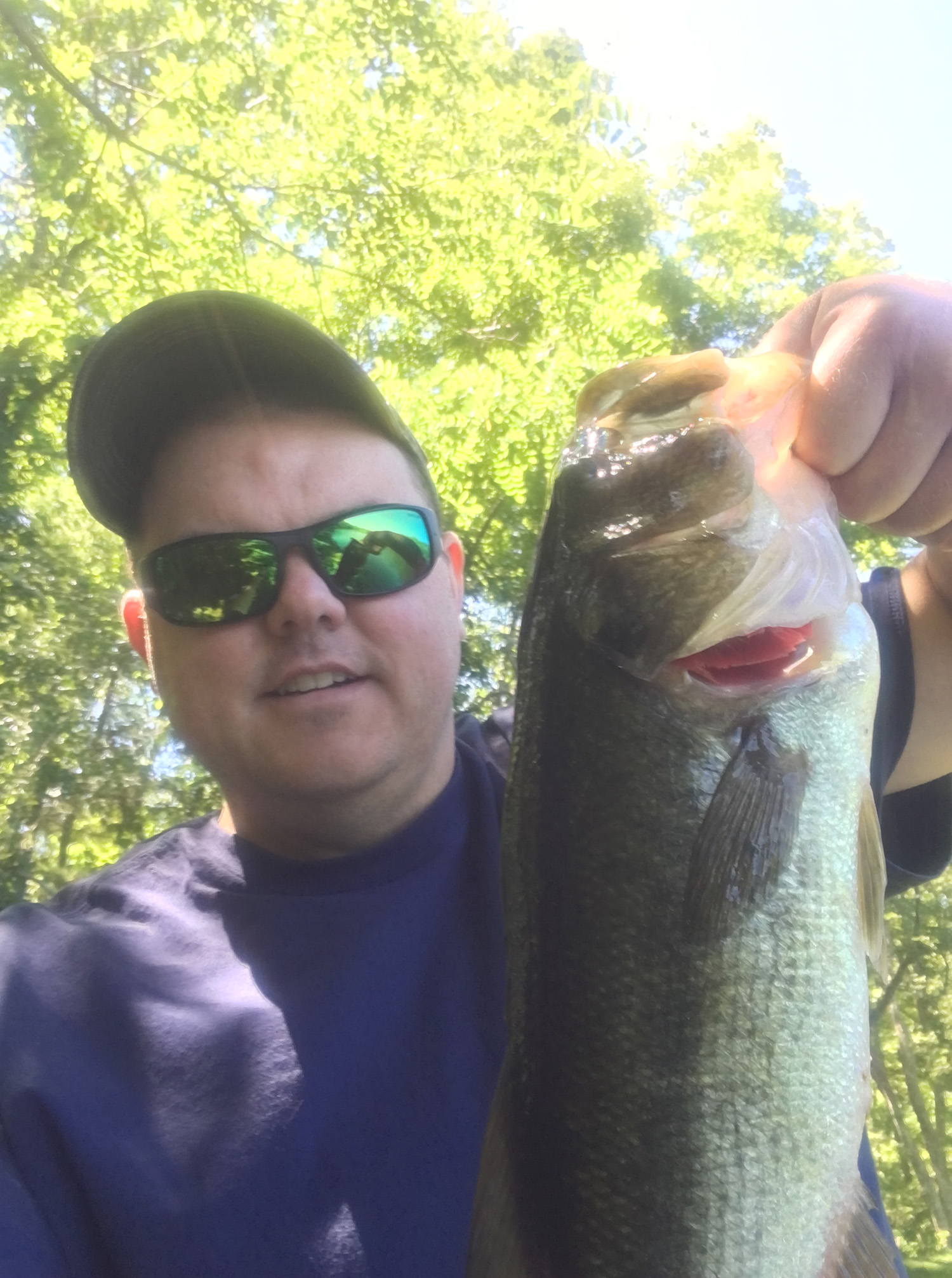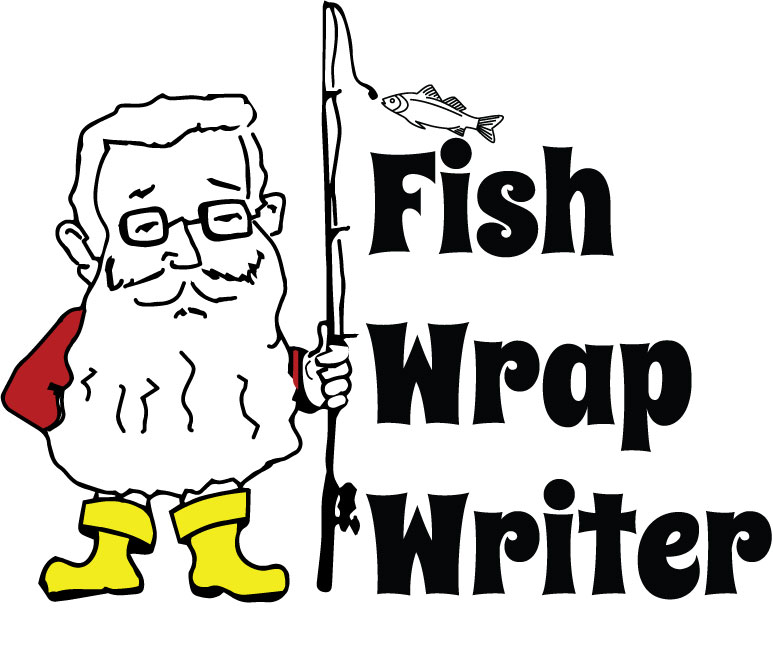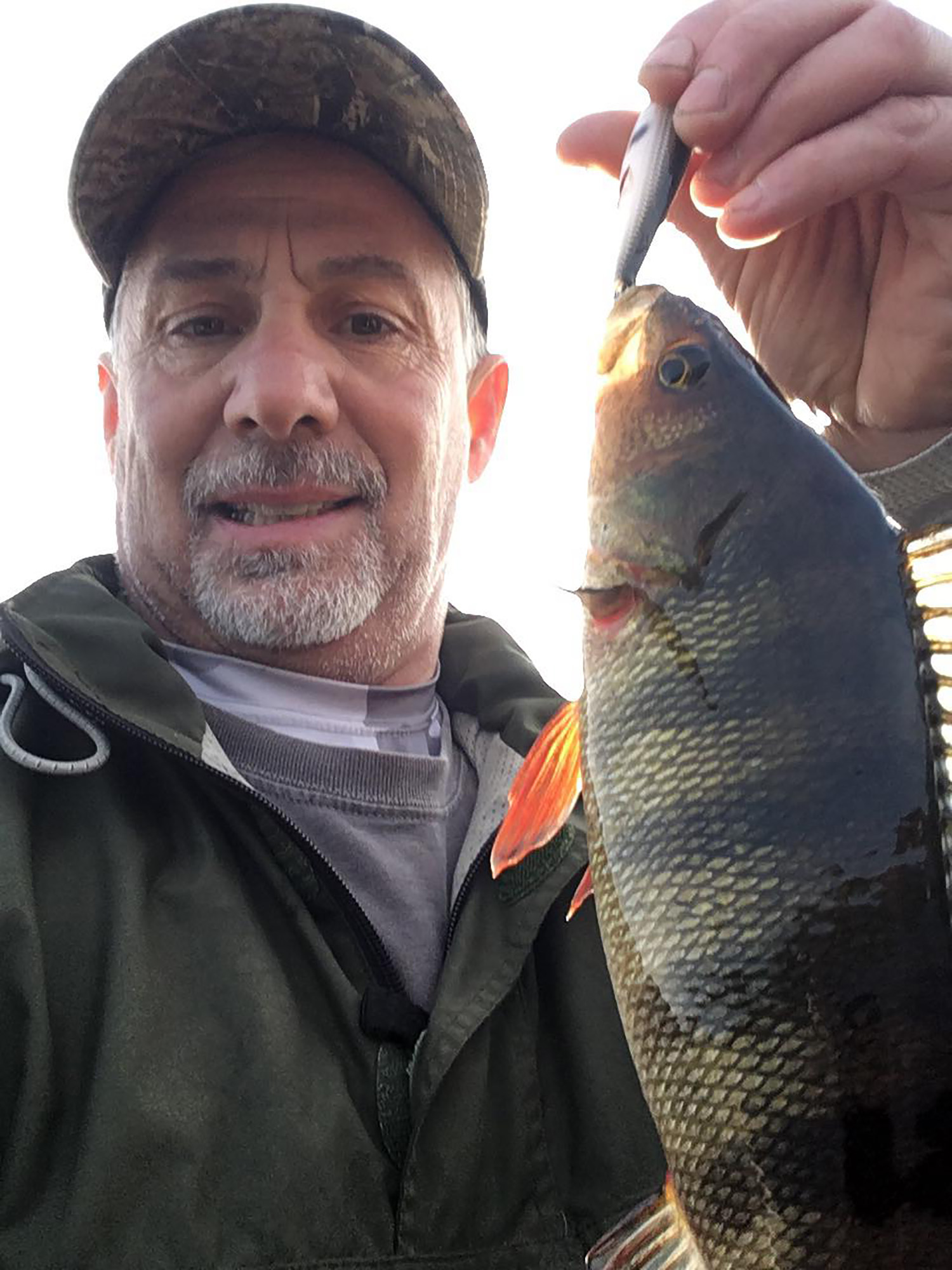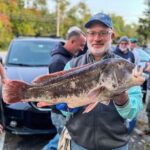Since we have yet to see ice, freshwater fishermen are still walking shorelines, rowing skiffs and paddling kayaks and they’re catching plenty of largemouth bass and pickerel. It’s takes a special kind of crazy to wade a cold edge of trees and sand for a one or two pound bass but when chances are high there might be a real bomber in there, the lure is strong. Bass aren’t hibernating, they still need food and this time of year, it takes finesse to pull them out of their winter comfort zones.
South County’s Bob Buscher spends a lot of time on the water, even in the winter months. He finds big largemouth hiding in submerged trees and over piles of structure. He knows that like most fishes, largemouth have a slower metabolism in cold months but they still hunt and to find them, colors always play a key role. Pumpkin patterns may work over rocks or hard structure when the sun is out but if finicky bass are holding tight to those trees with a cloudy cover, it might require a small grub or similar short plastic to entice them from their security.
“When the water temps dip below forty, I still catch fish on suspending jerk baits like the Lucky Craft Pointer 78.”
That particular bait utilizes a series of brass weights which do double duty, calling in fish with their vibration and wobbling action while also continuing to vibrate for a while when you pause your retrieve.
His message was pretty clear: retrieve and pause, retrieve and pause, repeat and repeat.
The colder the conditions, the slower the retrieve. If fishing is really slow, it might just mean you need to go deeper. Green vegetation may still survive in a pond’s deepest spots where water temperatures are somewhat moderate. Of course, there’s always the live bait option. Bass love minnows, bait shops love selling them and they can be stored for the short time if they have clean water and lots of aeration.
Don’t keep them in the tub; trust me, that doesn’t go over well.
All that vibration works with their lateral line which plays a key role in fish survival. One fish writer noted, “Research with rainbow trout at The University of New York and the University of Florida points to a complex, amazingly specific design of sensors along the lateral line to detect a variety of indicators, from changes in barometric pressure to movements of other fishes. Their research, viewed the lateral line as a ‘hydrodynamic antenna’ that is configured to retrieve flow signals and also suggest a physical explanation for the nearly universal sensory layout across diverse species.”
“I catch a good deal of perch and pickerel on (the Lucky Craft Pointer 78) as well,” he added. Perch are the basis of several other fishes diets so good freshwater anglers know to keep a supply of imitations in their bag of tricks. Pickerel also dig those perch and considering how their teeth angle backwards to ensure a painful and complete demise for their prey, perch are a diet staple. Pickerel are often viewed in these parts just as cutters of leaders and shredders of lures. Last season on a small mouth bass trip to northern Maine, we tried out a few mouse and furry rat flies on the five weight. Pickerel devoured every single one in short order. Good for the economy, bad for the other days of fly fishing for largemouth but they were fun to catch. They’re low blood pressure predators, they’ll sit almost motionless in the shadowy safety of branches or tall grasses, waiting for that perfect opportunity.
Possibly based on our overall water quality, not many folks in these parts will partake of a fine pickerel fillet, but out west where waters are often more clear, pickerel is a shore lunch staple. A few potatoes and onions, can of beans and a pot of salted boiling pond water, possibly mixed with a can of local ale, lunch is simple and sweet.

Aaron Flynn with a sweet late summer largemouth
“Just reel slowly with a jerk, jerk, pause cadence. The colder the water, the longer the pauses,” Bob said. Almost legendary saltwater sportsman and long time competitive bass angler Captain Jerry Sparks, has long said that top water poppers should be retrieved on a similar three count. Pop it three time, then pause. The same theory works with Bob’s cold water lures.
December is a fine month for fine freshwater fishing; if you prefer to go alone, keep a change of clothes in your vehicle, preferably baggy ones like sweatpants and a hooded sweatshirt. After a fall or roll over, you’ll need something dry and warm very quickly while you wait for the truck heater to kick in. Companies like SOL make lightweight bivy bags you can quickly throw over yourself to reflect your body heat in emergencies and many sell for less than ten dollars. You definitely don’t want a severe case of the shivers slowing your chances of surviving a winter accident.
Winter fishing is more fun with a friend like Bob who understands where fish hunt in cold water, how to choose the right bait and how to stay safe catching them.







0 Comments